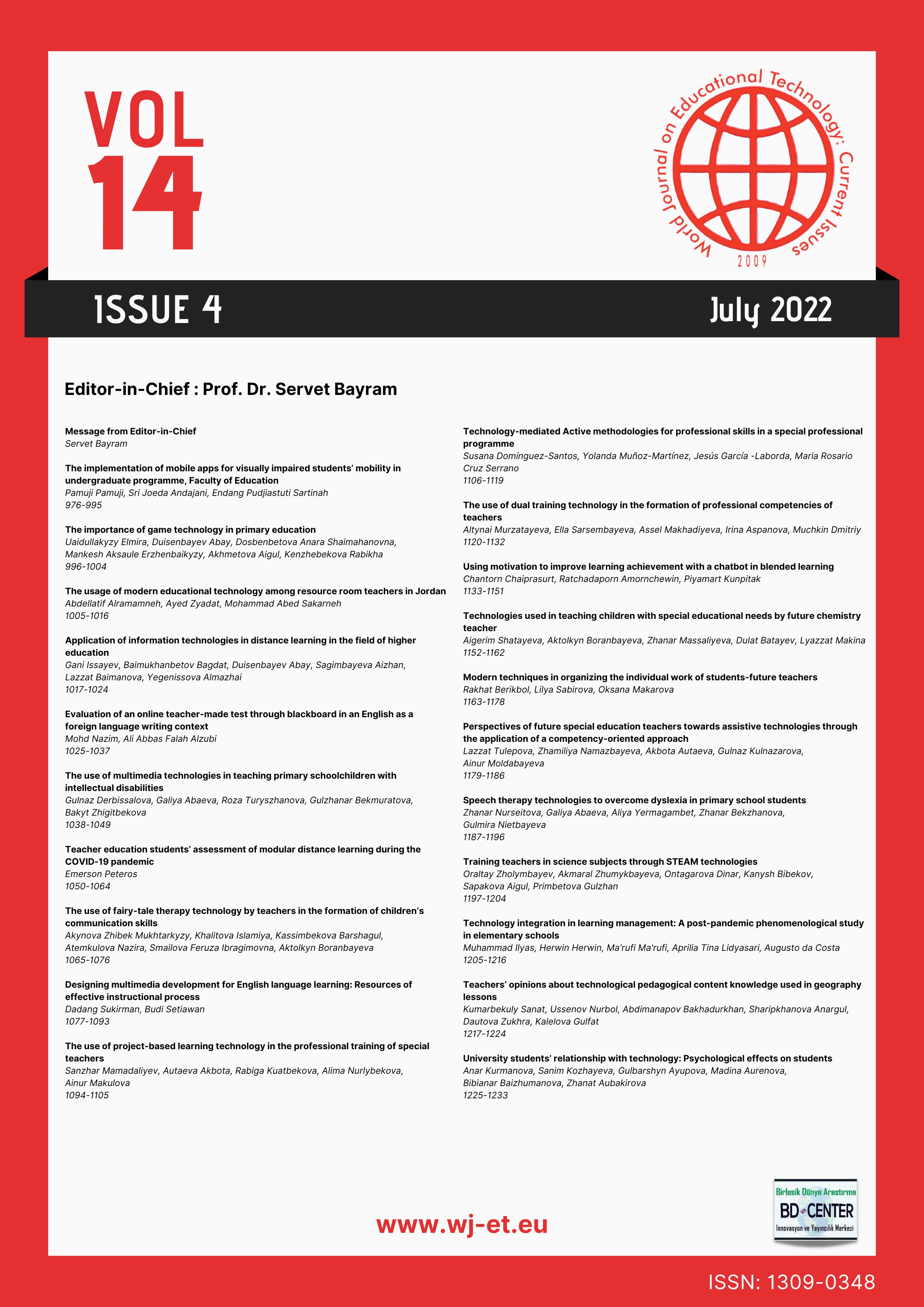The use of multimedia technologies in teaching primary schoolchildren with intellectual disabilities
Main Article Content
Abstract
In this study, it is aimed to reinforce the use of multimedia technologies in teaching primary schoolchildren with intellectual disabilities. The study was conducted in the spring semester of 2021–2022, and the quantitative research method was used in the study conducted with the participation of 262 elementary school students. Within the scope of the study, 3-week multimedia education online training was also provided to the students. In the study, the ‘multimedia in primary education’ measurement tool developed by the researchers was used to collect data. The data collection tool used in the study was delivered to and collected from primary school students by the online survey method with the help of their families. The analysis of the data was carried out using the SPSS programme; frequency analysis was carried out with the t-test; and the results obtained were added to the study accompanied by tables. As a result of the research, it was found that multimedia technologies have values that benefit primary school students within the field.
Keywords: Intellectual disability, primary school students, multimedia, distance education;
Downloads
Article Details

This work is licensed under a Creative Commons Attribution 4.0 International License.
World Journal on Educational Technology: Current Issues is an Open Access Journal. The copyright holder is the author/s. Licensee Birlesik Dunya Yenilik Arastirma ve Yayincilik Merkezi, North Nicosia, Cyprus. All articles can be downloaded free of charge. Articles published in the Journal are Open-Access articles distributed under CC-BY license [Attribution 4.0 International (CC BY 4.0)].
Birlesik Dunya Yenilik Arastirma ve Yayincilik Merkezi (BD-Center)is a gold open-access publisher. At the point of publication, all articles from our portfolio of journals are immediately and permanently accessible online free of charge. BD-Center articles are published under the CC-BY license [Attribution 4.0 International (CC BY 4.0)], which permits unrestricted use, distribution, and reproduction in any medium, provided the original authors and the source are credited.
